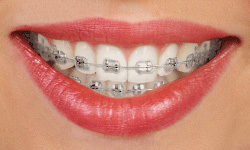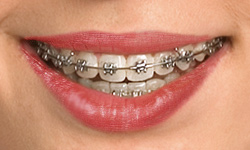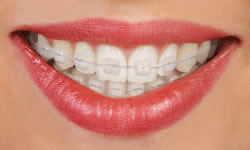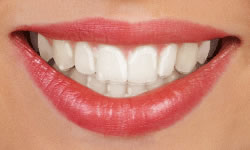Dental braces are an excellent treatment option to improve the appearance of your smile and fit of your bite. Braces are a treatment option that can be used to correct a wide variety of orthodontic problems. At each routine visit, Dr. Hardin or Dr. Sohn will evaluate for orthodontic treatment as needed. When your child is ready, they will gladly refer to an orthodontist that best fits their needs.
How Orthodontic Treatment Works
Orthodontic appliances are made of metal, ceramic, or plastic. They may be removable or they may be brackets bonded to the teeth. By placing a constant, gentle force in a carefully controlled direction, braces slowly move teeth to the proper position.
Gone are the days when a metal band with a bracket was placed around each tooth. Orthodontic patients can now choose brackets that are clear or metallic, and in some cases, customize the color of the appliance. Wires are far less noticeable, and the latest materials are designed to move teeth faster with more comfort.
Duration of Treatment
Depending on several factors, including age, treatment method, and how minor or severe your child’s case is, treatment time varies and can last between one and three years. Receiving interceptive, or early treatment, can also help provide a quicker treatment time later on in life. Another big factor to a successful treatment is your child’s cooperation. The more involved and diligent your child is, the quicker and more efficient treatment will be.
Before beginning treatment, the orthodontist will discuss all of your child’s options and provide an estimate for how long full treatment may take.
Types of Braces
Traditional Metal Braces

Traditional metal braces are the most common type of braces and are more comfortable today than ever before. Made of high-grade stainless steel, metal braces straighten teeth by using metal brackets and archwires. With metal braces, there is the option of adding colored elastics (rubber bands) for a more unique and colorful smile.
Self-Ligating Braces

Self-ligating braces are made from the same materials as traditional braces; however, self-ligating braces do not require the use of elastics, meaning fewer appointments and less friction being placed on the tooth. Self-ligating braces come with traditional metal, ceramic, or clear brackets. They are the same size as metal braces, but they use a specialized clip in place of elastics to help the archwire guide teeth into place. The clip helps reduce the amount of pressure being placed on the tooth and requires fewer adjustments because there are no elastics to replace.
Clear (Ceramic) Braces

Ceramic braces are made of clear materials and are therefore less visible on the teeth than metal braces. For this reason, ceramic braces are used mainly on older teenagers who have cosmetic concerns. While they are visually less prominent, they do require more attention to oral hygiene, as ceramic braces are larger and more brittle than their metal counterparts. For these reasons, ceramic braces tend to be used more on upper front teeth rather than on lower teeth.
Clear Aligners

Clear aligners are a series of invisible, removable, and comfortable acrylic trays that straighten the teeth like braces. Not only are the aligners invisible, they are also removable, allowing your child to eat and drink without concern while in treatment. Plus, this helps to make brushing and flossing less of a hassle. The aligners are comfortable and have no metal to cause mouth abrasions during treatment.
